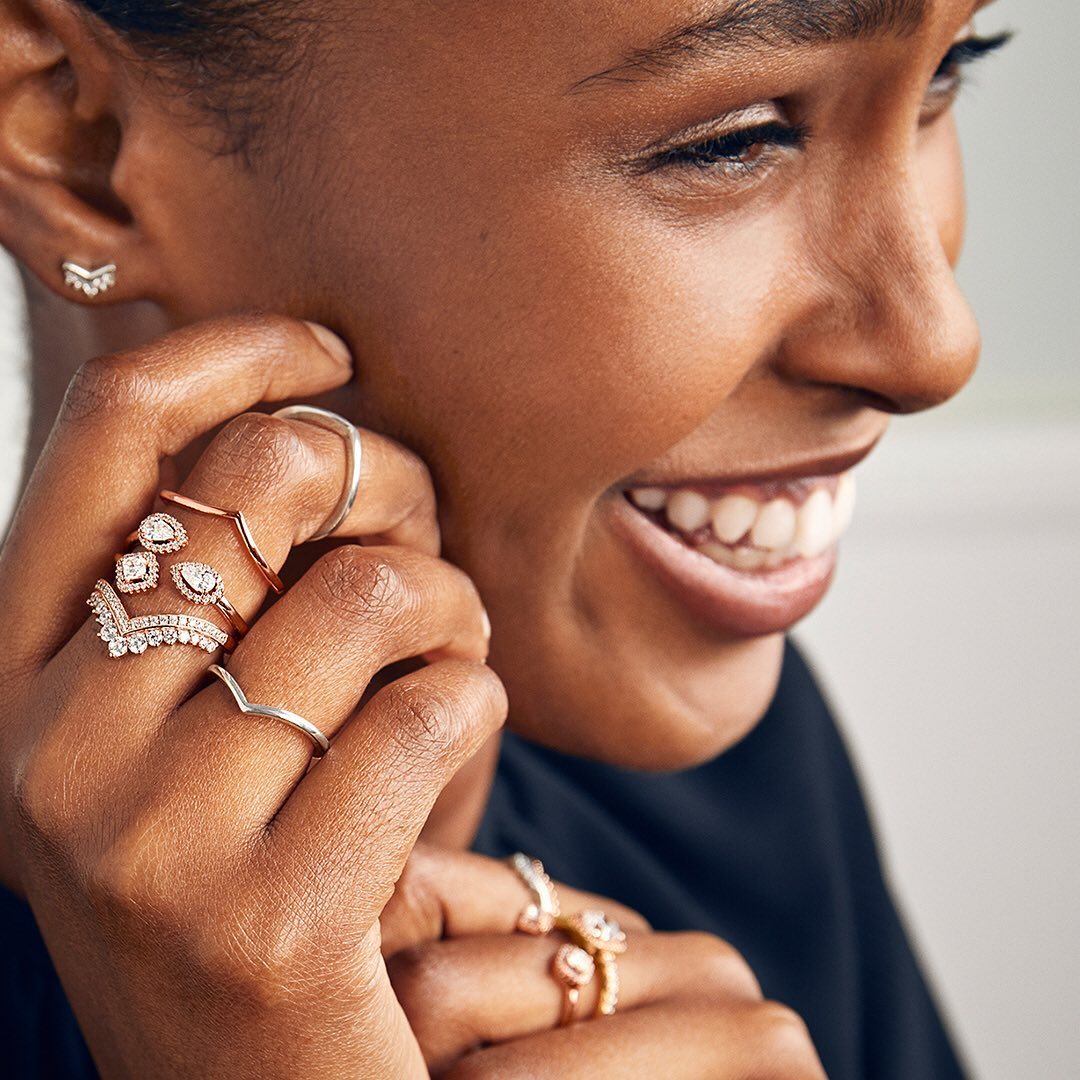
Recently, Danish jewellery producer Pandora put out a press release forecasting that its operations will be carbon neutral by the year 2025.
Pandora says that its crafting facilities will use only renewable energy by the end of 2020, and they state that 100 percent of its glass, rubber and gypsum waste was reused or recycled in 2019. This presents the company as being on track to achieve its target.
But what does carbon neutral mean? Pandora intends to equal the amount of all the greenhouse gases they put into the atmosphere by using sustainable practices – therefore balancing emissions out to zero or neutral. Why? Well, according to Julian Walter, a marketing specialist at ExJewel, a pair of heart-shaped gold studs equals about 31kgs of CO2 emissions, which is equivalent to a 200 km ride in a compact-class car.
Therefore, Pandora – the world’s largest jewellery maker by volume – has pledged to slash carbon emissions and water usage by sourcing 100% recycled silver and gold (that figure currently stands at 71 percent).
Recycled silver has one-third of the carbon emissions of mined silver while recycling gold emits 600 times less carbon than mining new gold. The acquisition of raw materials in the jewellery industry accounts for 95 percent of the overall carbon footprint.
“[s]ilver and gold are beautiful jewellery materials that can be recycled forever without losing their quality,” said Alexander Lacik, CEO of Pandora. “Metals mined centuries ago are just as good as new. They will never tarnish or decay. We wish to help develop a more responsible way of crafting affordable luxury like our jewellery, and prevent that these fine metals end up in landfills. We want to do our part to build a more circular economy.”
Implementing such measures across a company with revenues in the billions sounds impressive. However, other competitors are going further – in terms of both environmental sustainability and the socio-economic factor.
Venerable US jeweller Tiffany and Co., for example, with a larger revenue base than its Danish peer, is rated “strong” in terms of responsible sourcing by Human Rights Watch (HWC). Pandora has a “moderate” rating.
Whilst Tiffany and Co. can trace up to 99 percent of its raw materials to the points of origin, Pandora does not trace diamonds to mines of origin. Furthermore, Tiffany and co. says that 100 percent of its packaging and marketing collateral is sustainably sourced. Pandora, on the other hand, asserts that 100 percent of its paper bags and gift wrapping paper – a significantly more limited categorization – “originate from wood from sustainable forestry.”
With an increasing demand for sustainable and ethical credentials, and Pandora actively promoting its own environmental efforts, this begs the question of the ingenuousness of the company. Are these empty promises?
The Danish company is making slow and steady progress. Whilst Pandora is a long way from its 2025 carbon-neutral promise, there is an abundance of evidence supporting their efforts to lessen their environmental impact.
To read Pandora’s full annual reports, visit their website in the link below.
https://pandoragroup.com/investor/news-and-reports/annual-reports





